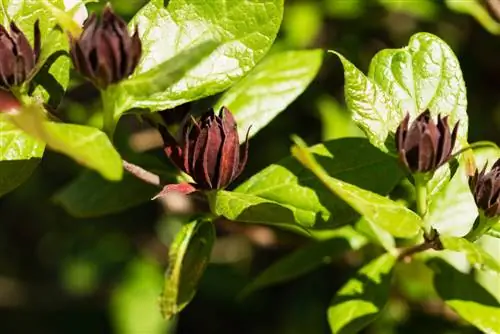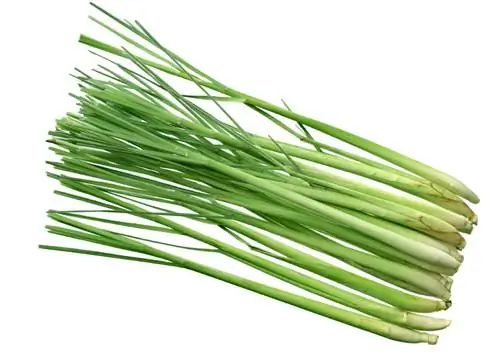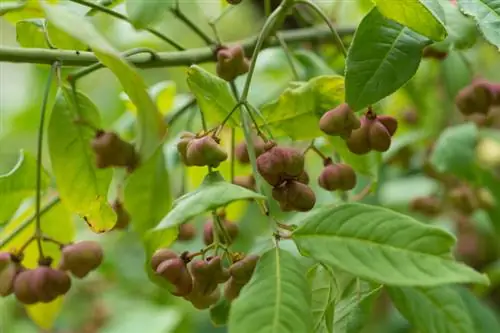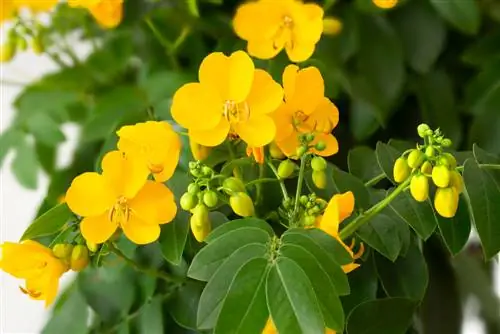- Author admin [email protected].
- Public 2023-12-16 16:46.
- Last modified 2025-01-23 11:22.
The spice bush is a true fragrance miracle because its bark exudes a spicy clove aroma. The flowers, on the other hand, are reminiscent of the scent of magnolias. Regular pruning is necessary so that the tree provides sensory experiences every year. They keep the shrub he althy.
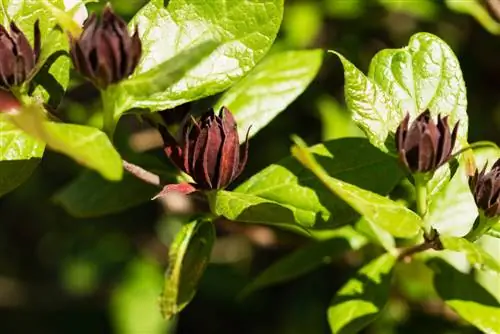
How do I cut a spice bush correctly?
Spice bushes require regular pruning measures such as planting, thinning and rejuvenation. Cut just above a bud, removing offending branches and paying attention to the branch ring. The time is in spring to summer, before budding and without risk of frost.
Basic rules
The division tissue is located in the branch of the spice bush. This lies directly under the bark and is called the cambium. When injured, it forms wound tissue that closes the open interface. Botanists use the term sleeping eye to mean secondary buds that serve to restore lost branches. If these preventative buds are damaged, the bush can no longer sprout.
How to do it right:
- when shortening, cut just above a bud
- last eye shows the direction of growth of the new shoot and should point outwards
- When completely removing the branches, cut them directly at the base and do not leave any stubs behind
- be careful not to damage the astring
Time
The planting cut is done immediately after the shrub has been planted in the garden. Thinning cuts are carried out after winter when the tree is about to sprout and there is no risk of frost. The ideal period for a rejuvenating cut is from spring to summer.
Cutting techniques
The spice bush generally tolerates pruning well and can be subjected to various pruning measures every year. You should avoid radical pruning, as this will severely limit flower formation in the coming season. When cutting, limit yourself to thinning and tapering cuts. Plant cuts are possible if special growth forms are desired.
Plant cutting
With this procedure you create a wide crown pyramid. The top shoot is not shortened. If a competing instinct has developed into the top, you have to cut it off cleanly. Choose three to five lateral branches, shortening the upper ones and leaving the lower ones long. Shorten all secondary branches and remove shoots that disturb the appearance.
Tip
Leading branches are only shortened on annual shoots. Do not cut back into the two or three year old wood.
Blending
First look at the wood from a distance. This way you can assess which branches are disturbing the growth habit and need to be removed. Spice bushes have oppositely arranged buds and develop forked branches whose shoots are equally strong. Remove the branch that grows into the crown or steeply upwards. If branches cross each other or are too close, they must also move. Remove dead, damaged and spindly specimens and those that compete with the scaffold branches.
Rejuvenate
Old bushes that no longer bloom properly require rejuvenating pruning. Cut out three to four of the oldest branches just above the ground. If the spice bush has developed fresh young shoots in the next season, shorten them by half and remove any annoying branches.

